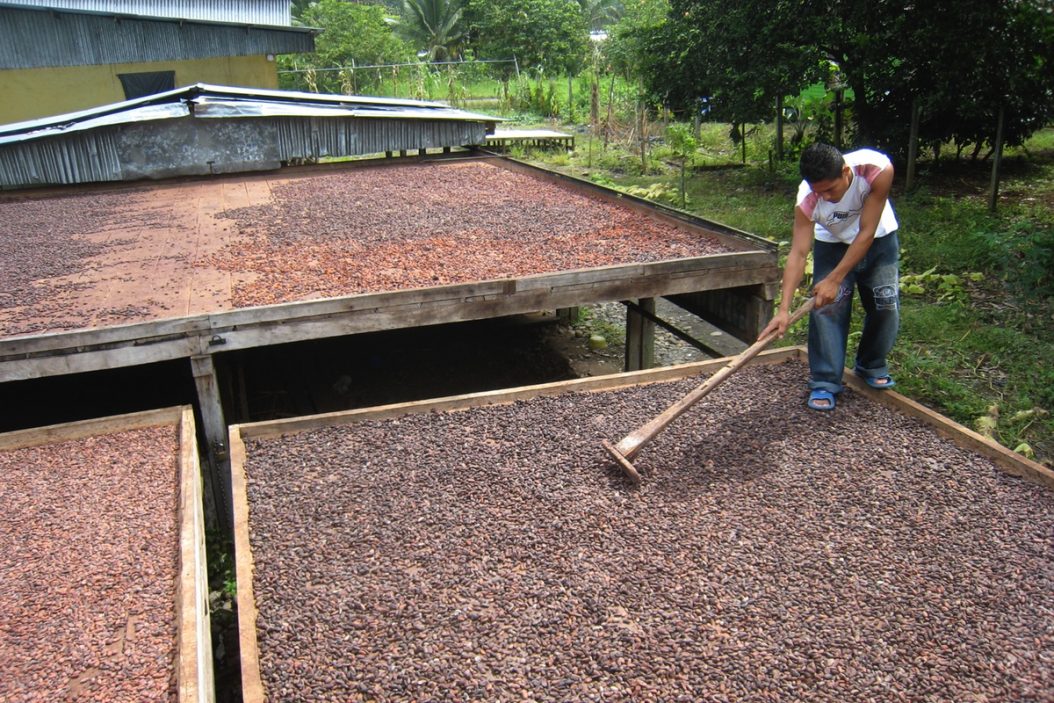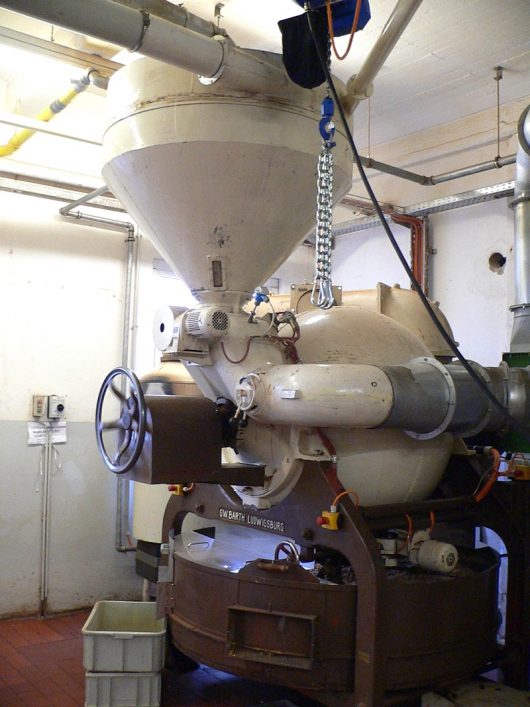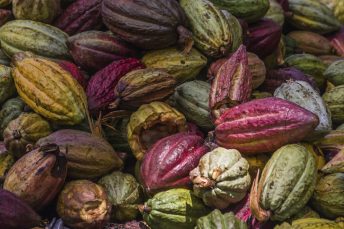The cocoa bean
and its processing
From-tree-to-bar, part 3
Text:
Katharina Kuhlmann
Photography:
EcoFinia GmbH
19 Juli 2018

We’re making progress in our big special on the long journey of our big passion called chocolate. We’ve already looked at the cocoa tree as a plant and its much sought-after harvest, the cocoa fruit. Finally, the fruit was opened by a routine cut of the cocoa farmer and the pale cocoa beans are looking at us puzzled from their shining pulp. Our topic for this “From-tree-to-bar” special in the VIVANI magazine is what happens to them next. We can already tell you this: at the end of the process the production of the chocolate is taking place. We want to tell you about this in the next and last part of the series.
Sweating under the tropical sun – the processing of the cocoa bean in its country of origin
The first big and important step on the way to chocolate and cocoa is the fermentation of the cocoa beans. In this process, the beans go through a tropical sauna part 1, which is pretty important for the further handling process. Traditionally they are wrapped in banana leaves and left on the floor or in hollows for 2 to 7 days. Besides this so-called pile fermentation baskets, barrels or wooden boxes can be used, a method usually used in bigger plants. The closed methods have a clear advantage because they protect the beans from pests.
Fermentation effects many important transformations in the beans. The fruit pulp turns into liquid and vaporises at an average of 45 to 50 °C, which leaves the naked cocoa beans. These are starting to shoot. Due to the heat, the shoot dies immediately. The removal of germination capacity is indispensable for later storage. The first preliminary stages of flavours are built in the cocoa beans during further processes. The also turn from white into brown.
As soon as the beans have survived this torture a second sauna is waiting for them. They are put out to dry for one to two weeks in the hot tropical sun on special trays, mats or simply on the bare floor, sometimes in special halls. They are turned over regularly and at the end of the drying time they have lost at least half of their weight. The high water content of around 60 % at the end of fermentation has diminished to no more than 7% after drying. The beans are easier to store in this condition and they have formed additional flavours.
Let’s get on board and into the factory – control and hygiene
The processing of the dried cocoa beans usually never takes place in the country of origin. We have to say goodbye to the beans which are put into gunnysacks for their trip to Europe or Northern America. The sacks have a capacity between 50 and 70 kilograms. A last quality check takes place in warehouses and the sacks are registered and labelled. They are taking the sea route to the chocolate factory on big container vessels.
The containers have to be clean, dry and odourless and best ventilated to protect the fragile good. Temperature fluctuation has to be avoided which is why they shouldn’t be stored on the deck or close to engines.
In case they special requirements are not met they might arrive mouldy and extra or overfermented, which would mean a loss of the whole shipment. During the trip, you have to keep an eye on the cocoa beans so they don’t get contaminated by other cargo, for example by dust.
Even by meticulous measures contamination occurring in the country of origin aren’t easy to prevent, that’s why the cocoa beans have to be cleaned after the check-in in the chocolate factory or the roasting plant.
Air flows, sieves and magnets remove foreign objects like jute fibres, pieces of wood, dust, metal particles and much more.
Roasting, peeling, breaking, milling – a cocoa bean shouldn’t be squeamish
As soon as the cocoa beans have been cleaned they go through three more important processes on their way to chocolate where they aren’t handled with velvet gloves. Initially it’s getting hot – the roasting process begins. Depending on the type, quality and purpose temperature and roasting duration vary widely. The fine cocoa types for chocolate production are lucky, they are only treated with 100 to 115 °C. Beans used for cocoa production have to expect up to 140 °C. The roasting processes with low temperatures usually take longer (up to over one hour) than those with high temperatures (about 15 – 20 minutes). As soon as the process has ended quick cooling is crucial to prevent an overroasting and burning of the beans.
Roasting completes the flavours of the cocoa bean. Up to 400 flavors can be obtained. The dark brown beans have even less moisture content and are easier to divide into shell and core. The roasting process can also be swapped with the peeling and breaking of the cocoa beans. The problem of different sized beans makes an ideal roasting process more difficult, roasting the so-called nibs resolves this problem.
Cocoa beans are broken using rolls or the so-called impact crusher. The latter is a machine that throws the beans at steel plates at high acceleration and breaks them. Like in the first cleaning process in the factory air flows come into play again which remove the shells from the broken kernels.
Finally, the nibs are milled using ball mills or heated rolls. The cocoa butter leaves the destroyed cell structures, liquefies and coats the cocoa fragments. The cocoa mass forms, which is liquid in heated condition and solid in cold condition. This is the starting point for any kind of further processing, no matter if it is chocolate, cocoa power or cocoa butter.
Roasting, peeling, breaking and milling are the essential basic processes of the processing of the cocoa beans in the factory. Depending on the manufacturer and the final product more intermediate steps can be added. One example is the thermal treatment before the roasting. Infrared, steam or hot air debacterise the cocoa beans further and optimise the results of breaking the beans. Another additional process is the cocoa nib finishing using a pressure reactor. It removes unwanted substances at an early stage and shortens the conching times at a later time.

Verwandte Artikel
The Chocolate Journal


